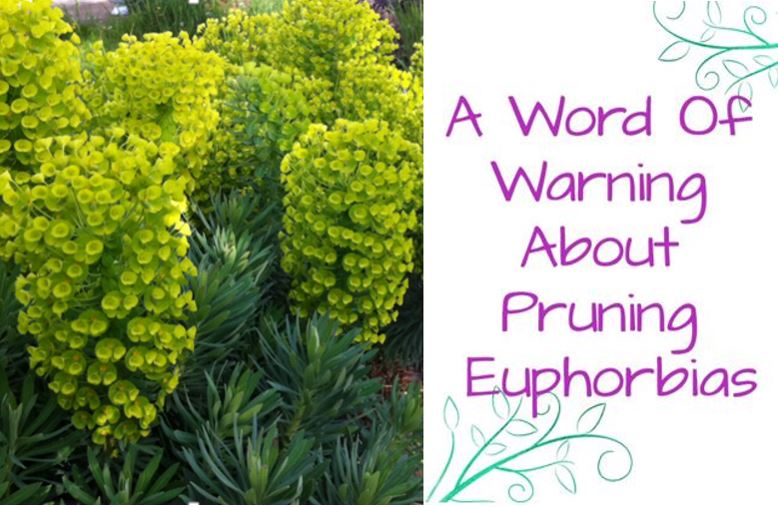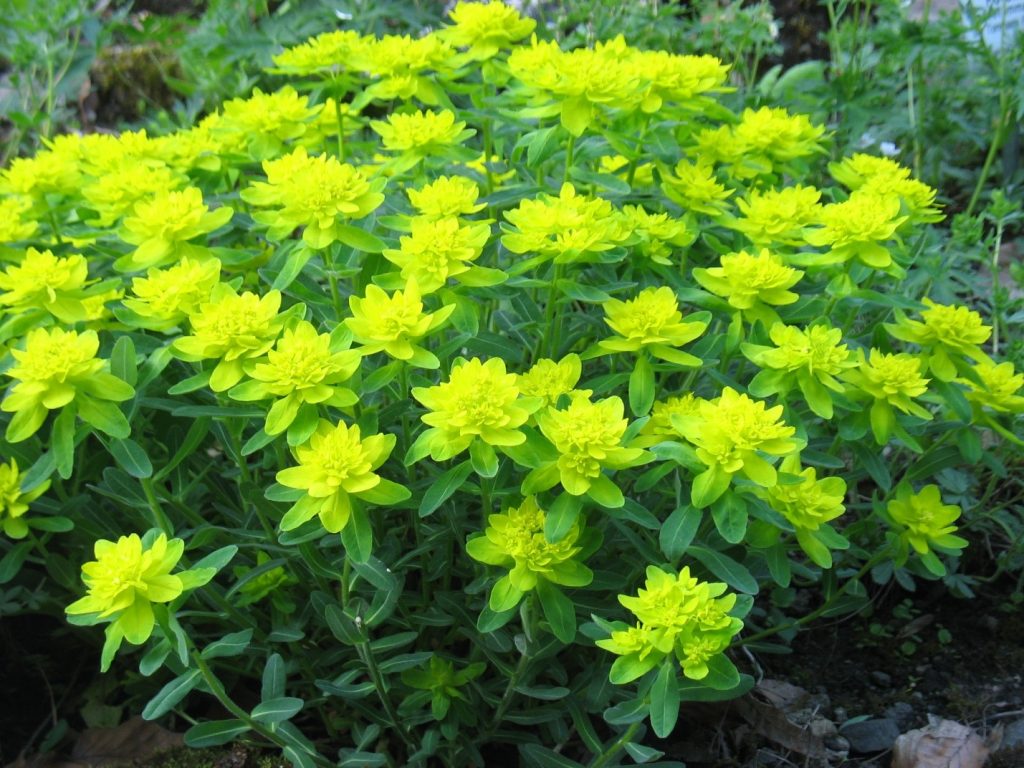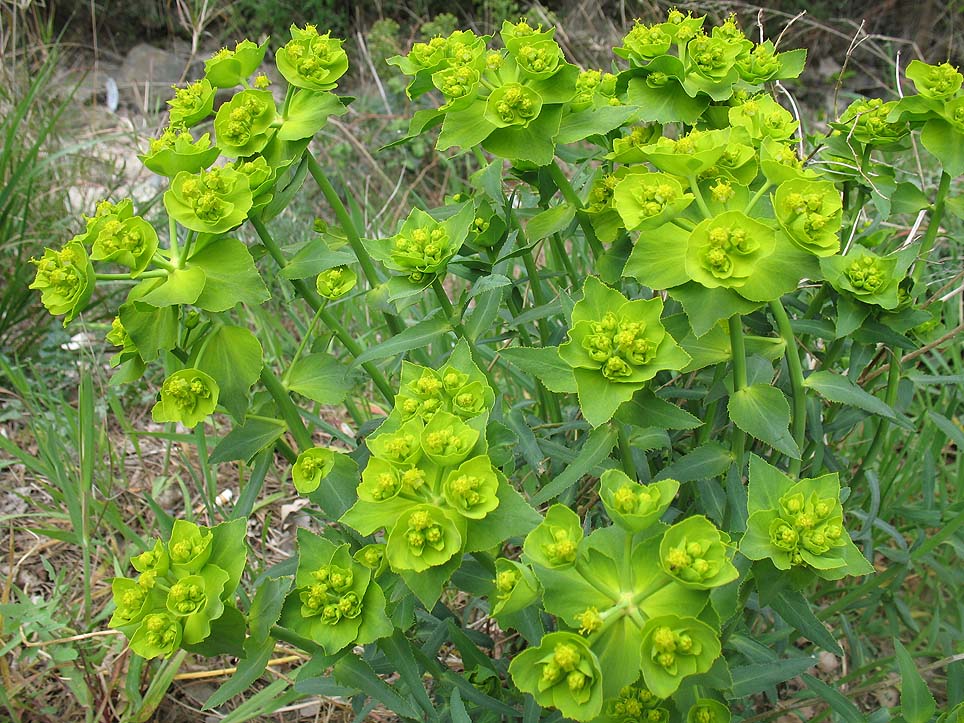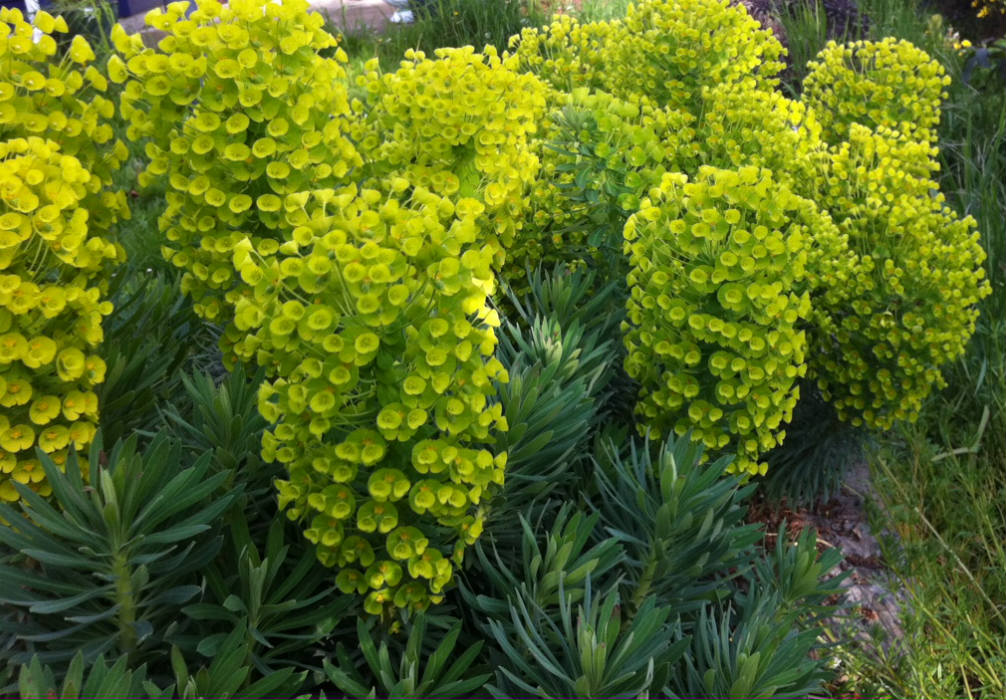Pruning Euphorbias
One of our fellow gardeners was injured last year when sap got in his eye while pruning a Euphorbia during a work party, so some background information is being provided here to help people take proper precautions when handling plants from this family.
There are over 2000 species of Euphorbia including very common houseplants like crown of thorns and poinsettia. Their beauty, hardiness and ease of growing are making a lot of the varieties popular. However, with increased use of these plants, there are more people being exposed to the potential of an allergic reaction.
Euphorbia plants bleed a milky sap or latex which is highly toxic. This sap is an irritant to the skin, nose, mouth and eyes, and can also cause severe discomfort if eaten. If you have children of ages where all the world is a “tasting” opportunity, it may be safer not to grow euphorbia.
Many common plants like wisteria, hydrangeas, mums, English ivy, oleander and azaleas are toxic as well, but only if they are eaten. Since it the sap of the euphorbia which is toxic, people are much more likely to come in contact with it. If you have ever had a poinsettia, you know that even breaking a single leaf off results in the milky sap gushing out from the stem.
Here are a few of the most common euphorbias:
Safe handling when pruning- wear gloves and preferably a long sleeve shirt [the sap can stain clothing, so don’t wear your favourite one!]
- wear eye protection
- make sure your pruners are clean and sharp
- have a rag or paper towel in hand to catch and help stop the flow of the sap, can take 3-4 minutes
- dispose of the rag/paper towel carefully and quickly
- the sap leaves a sticky residue, so be sure to clean clothing, gloves and tools thoroughly after pruning
Please treat Euphorbia plants with a healthy respect, and keep the sap away from your skin, eyes, nose and mouth.




